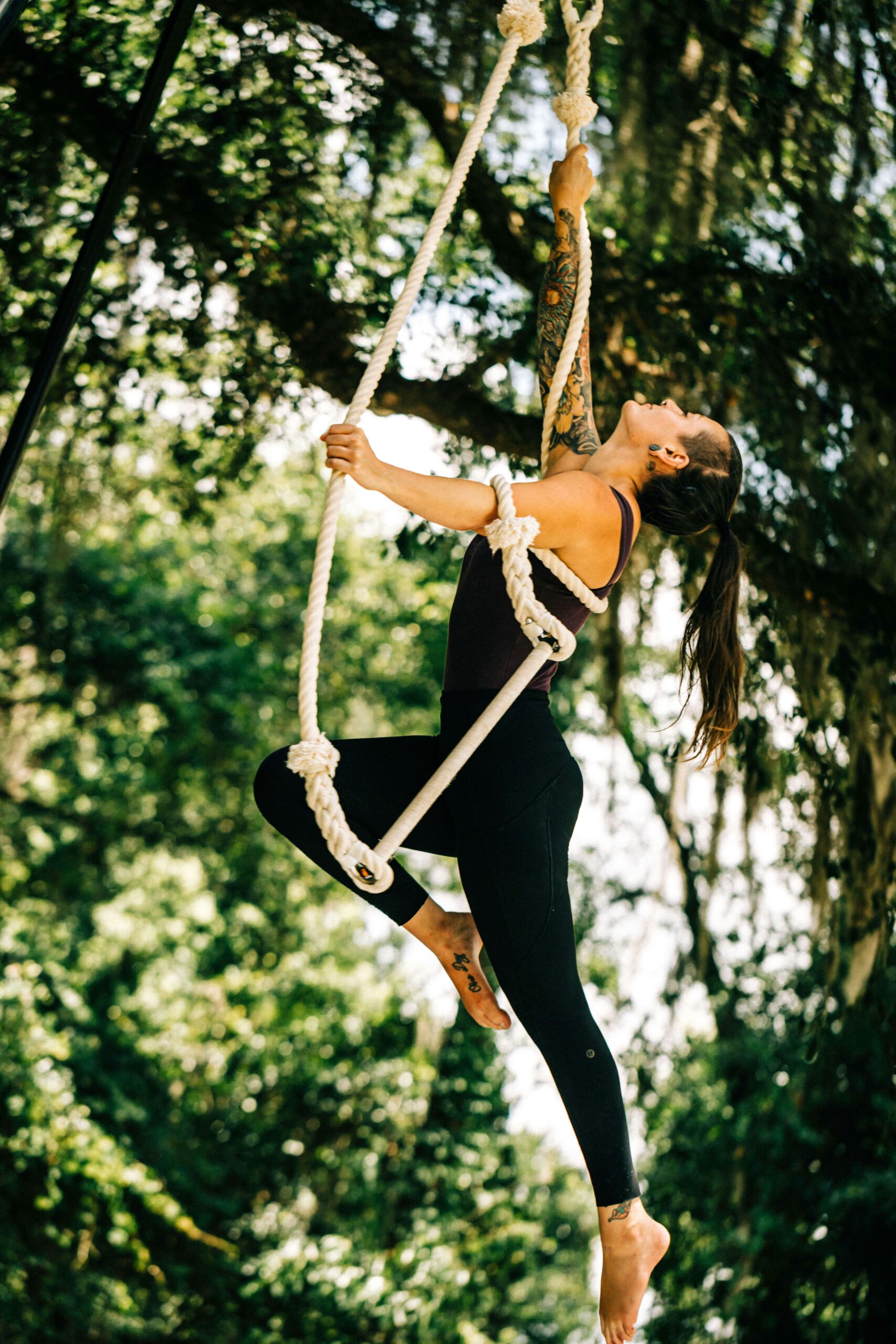
Mindful Endurance: Building Resilience One Breath at a Time
In a world that often feels like a relentless marathon, resilience is the quiet strength that keeps us moving forward. But resilience isn’t just about grit or willpower; it’s a skill that can be cultivated through mindfulness. Mindful endurance—the practice of building mental, emotional, and physical stamina through intentional, present-moment awareness—offers a powerful way to navigate life’s challenges. By anchoring ourselves in the breath, we can transform how we respond to stress, setbacks, and uncertainty. This blog post explores the what, why, and how of mindful endurance, with practical steps and real-world examples to help you build resilience one breath at a time.
What Is Mindful Endurance?
Mindful endurance is the ability to stay grounded, focused, and resilient in the face of adversity by using mindfulness techniques, particularly breath awareness. It combines the principles of mindfulness—non-judgmental awareness of the present moment—with the concept of endurance, which is the capacity to withstand prolonged stress or difficulty. Unlike traditional notions of endurance that emphasize pushing through pain, mindful endurance is about working with your mind and body, not against them.
At its core, mindful endurance uses the breath as an anchor. The breath is always with us, a constant rhythm that can center us no matter the circumstances. By tuning into it, we regulate our nervous system, quiet mental chatter, and create space to respond thoughtfully rather than react impulsively.
Why Mindful Endurance Matters
Resilience is more critical than ever. Chronic stress, uncertainty, and burnout are rampant, with studies showing that over 70% of adults report feeling overwhelmed by stress at least occasionally. The American Psychological Association notes that prolonged stress can lead to anxiety, depression, and physical health issues like heart disease. Mindful endurance offers a counterbalance, helping us build the mental and emotional fortitude to thrive under pressure.
Here’s why it works:
- Regulates the Nervous System: Focusing on the breath activates the parasympathetic nervous system, which calms the body’s fight-or-flight response. This reduces cortisol levels, helping you stay composed during stress.
- Enhances Emotional Regulation: Mindfulness fosters self-awareness, allowing you to observe emotions without being swept away by them. This creates a buffer between a trigger and your response, enabling wiser decisions.
- Builds Mental Stamina: Like physical exercise, regular mindfulness practice strengthens your ability to focus and persist through challenges, rewiring neural pathways for resilience.
- Improves Physical Endurance: Breath control is a cornerstone of athletic training. Techniques like diaphragmatic breathing increase oxygen efficiency, reduce fatigue, and enhance performance under physical stress.
- Fosters Acceptance: Mindfulness teaches us to accept discomfort without resistance, which is key to enduring hardships without breaking.
How to Build Mindful Endurance
Building mindful endurance is a practice, not a one-time fix. Below are practical steps to integrate it into your life, along with examples to illustrate their impact.
- Master Breath Awareness
The foundation of mindful endurance is breath awareness. By focusing on your breath, you create a point of stability amid chaos.
How to Do It:
- Find a quiet space and sit comfortably.
- Close your eyes and take a few deep breaths, noticing the air moving through your nose, chest, and belly.
- Settle into your natural breathing rhythm. Count each inhale and exhale (e.g., “In, one; out, one; in, two; out, two” up to ten, then start over).
- If your mind wanders, gently bring it back to the breath without judgment.
- Practice for 5–10 minutes daily.
Example: Sarah, a nurse working long shifts during a hospital surge, felt overwhelmed by stress. She started practicing breath awareness during her breaks, focusing on slow, deep breaths for five minutes. This helped her stay calm during tense moments, like managing a difficult patient, and she noticed she felt less drained by the end of her shifts.
Why It Works: Breath awareness interrupts the stress response, lowering heart rate and blood pressure. A 2018 study in Frontiers in Human Neuroscience found that mindful breathing reduces amygdala activity, the brain’s fear center, promoting calm.
- Practice Mindful Observation During Stress
When faced with a challenge, use mindfulness to observe your thoughts, emotions, and physical sensations without reacting. This builds the ability to endure discomfort without being consumed by it.
How to Do It:
- When stress arises, pause and take three slow breaths.
- Mentally scan your body: Are your shoulders tense? Is your heart racing?
- Name your emotions (e.g., “I feel anxious” or “I’m frustrated”) without trying to change them.
- Observe your thoughts as if they’re clouds passing in the sky, letting them come and go.
- Return to your breath to ground yourself, then decide how to proceed.
Example: James, a marathon runner, used mindful observation during a grueling race. When leg cramps hit at mile 20, he noticed the pain, his frustration, and his urge to quit. Instead of fighting these feelings, he acknowledged them, focused on his breath, and kept running. This mental shift helped him finish the race, even though he didn’t hit his goal time.
Why It Works: Observing without reacting builds psychological flexibility, a key component of resilience. Research in Psychological Science (2019) shows that mindfulness reduces emotional reactivity, helping people cope with adversity.
- Use Breath-Based Techniques for Physical Endurance
Breath control can enhance physical stamina, whether you’re an athlete or just tackling a demanding day. Techniques like box breathing or diaphragmatic breathing optimize oxygen use and reduce tension.
How to Do It (Box Breathing):
- Inhale deeply through your nose for 4 seconds.
- Hold your breath for 4 seconds.
- Exhale slowly through your mouth for 4 seconds.
- Hold for 4 seconds. Repeat for 4–5 cycles.
- Use during physical exertion or when you feel fatigued.
Example: Maria, a firefighter, used box breathing during intense training drills. When carrying heavy equipment up stairs left her gasping, she paused to do a few cycles of box breathing. This steadied her heart rate and helped her push through the exercise without panicking.
Why It Works: Controlled breathing improves oxygen delivery to muscles and reduces the perception of effort. A 2020 study in Sports Medicine found that breath training enhances endurance performance by improving respiratory efficiency.
- Cultivate a Daily Mindfulness Practice
Consistent practice strengthens your resilience muscle. A daily mindfulness routine, even if brief, builds the foundation for enduring life’s ups and downs.
How to Do It:
- Set aside 10–20 minutes daily for mindfulness meditation. Use apps like Headspace or Insight Timer for guided sessions if needed.
- Incorporate mini-practices throughout the day, like a one-minute breath check-in before meetings or a mindful walk where you focus on your steps and breath.
- Reflect weekly on how mindfulness is helping you handle challenges.
Example: David, a single parent juggling work and childcare, started a 10-minute morning meditation practice. Over months, he noticed he was less reactive to his kids’ tantrums and better able to manage work stress. When his boss unexpectedly reassigned a major project, David used his mindfulness skills to stay calm and adapt.
Why It Works: Regular mindfulness practice rewires the brain for resilience. A 2017 meta-analysis in Neuroscience & Biobehavioral Reviews found that mindfulness meditation increases gray matter in areas tied to emotional regulation and focus.
- Embrace Discomfort with Compassion
Resilience often requires sitting with discomfort—whether it’s physical pain, emotional turmoil, or uncertainty. Mindfulness teaches us to approach these experiences with self-compassion, reducing resistance and building endurance.
How to Do It:
- When facing discomfort, acknowledge it with kindness (e.g., “This is hard, and it’s okay to feel this way”).
- Use your breath to stay present rather than avoiding or numbing the feeling.
- Remind yourself that discomfort is temporary and part of growth.
- Practice self-compassion by placing a hand on your heart and breathing deeply.
Example: Lisa, grieving the loss of a loved one, used mindful self-compassion to endure waves of sadness. When grief felt overwhelming, she’d sit quietly, breathe, and say, “This pain is part of love, and I’m here for myself.” This helped her process her emotions without being paralyzed by them.
Why It Works: Self-compassion reduces the emotional toll of suffering, making it easier to persevere. A 2015 study in Personality and Social Psychology Bulletin found that self-compassionate people are more resilient to setbacks.
Real-World Applications of Mindful Endurance
Mindful endurance isn’t just for extreme situations; it’s a versatile tool for everyday life. Here are a few scenarios where it shines:
- Workplace Stress: A project manager facing tight deadlines uses breath awareness to stay calm during heated meetings, improving team collaboration.
- Parenting Challenges: A parent uses mindful observation to pause and respond thoughtfully to a child’s meltdown, reducing household tension.
- Athletic Performance: A cyclist employs box breathing during steep climbs, maintaining energy and focus to reach the summit.
- Emotional Recovery: Someone navigating a breakup uses self-compassion and meditation to process pain, rebuilding confidence over time.
Challenges and Tips for Success
Building mindful endurance takes time, and obstacles are normal. Here are common challenges and how to overcome them:
- Challenge: Difficulty focusing during mindfulness practice.
- Tip: Start with short sessions (1–2 minutes) and gradually increase. Use guided meditations to stay on track.
- Challenge: Feeling skeptical about mindfulness.
- Tip: Experiment with it for two weeks and journal any changes in your stress levels or mood.
- Challenge: Forgetting to practice.
- Tip: Set reminders or tie mindfulness to daily habits, like breathing mindfully while brushing your teeth.
Conclusion: One Breath at a Time
Mindful endurance is a journey of small, intentional steps. By anchoring yourself in the breath, observing your inner world with curiosity, and embracing discomfort with compassion, you can build resilience that carries you through life’s toughest moments. The beauty of this practice is its simplicity: no matter where you are or what you’re facing, your breath is always there, ready to guide you forward.
Start today. Take a deep breath, notice it, and let it be the first step toward a more resilient you. Over time, those single breaths will weave together into a tapestry of strength, helping you endure—and even thrive—through whatever comes your way.
Want to dive deeper? Try a mindfulness app, join a local meditation group, or explore books like “The Power of Now” by Eckhart Tolle or “Self-Compassion” by Kristin Neff.
Share your experiences with mindful endurance in the comments below!
All the best,
Patti


